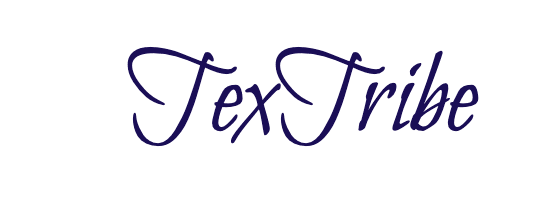Understanding the difference between “angel” and “angle” is crucial for clear communication, as these words, while similar in spelling, carry completely different meanings. “Angel” refers to a spiritual being believed to act as a messenger or servant of God, often depicted with wings and a halo in various religious texts. “Angle,” on the other hand, relates to geometry and describes the space (usually measured in degrees) between two intersecting lines or surfaces at or close to the point where they meet.
| Aspect | Angel | Angle |
|---|---|---|
| Definition | A spiritual being acting as a messenger of God | The space between two intersecting lines or surfaces |
| Representation | Often depicted with wings and a halo | Represented by degrees or radians in geometry |
| Use in Sentences | “The child believed she was protected by an angel.” | “The carpenter measured the angle of the joint.” |
Difference Between “Angel” and “Angle”
Definition of Angel
An "angel" is defined as a supernatural being found in various religions and mythologies, serving as protectors, messengers, or agents of God. They are often portrayed as possessing moral goodness and celestial power.
Definition of Angle
An "angle" is a figure formed by two rays, called the sides of the angle, sharing a common endpoint, known as the vertex of the angle. Angles are fundamental in the study of geometry and are measured in units such as degrees or radians.
Origin of Angel
The word “angel” originates from the Latin “angelus,” which itself derives from the Greek “ángelos” meaning “messenger.”
Origin of Angle
The term “angle” comes from the Latin “angulus,” meaning “corner,” which reflects its geometric significance as the figure formed by the meeting of two lines.
Pronunciation
- Angel: /ˈeɪn.dʒəl/
- Angle: /ˈæŋ.ɡəl/
Comparing Angel and Angle
The primary distinction between “angel” and “angle” lies in their completely different domains: one is theological and spiritual, while the other is mathematical and physical. Their similarity in spelling but difference in meaning makes them a classic example of homophones in the English language, where context is key to understanding which term is being used.
Usage in Sentences with Explanations
Use of Angel in Sentences
- The story depicted the guardian angel watching over the family. (Here, “angel” refers to a protective spiritual being.)
- In her dream, she saw an angel who gave her a message of hope. (In this sentence, “angel” is used in the context of a divine messenger.)
- The painting showed an angel with a sword standing at the gates of paradise. (This example uses “angel” to describe a celestial being in religious art.)
- Many cultures have tales of angels interacting with humans. (“Angel” here refers to beings from spiritual or religious narratives.)
- The concept of an angel varies significantly across different religions. (In this sentence, “angel” is discussed in a theological context.)
Use of Angle in Sentences
- The architect calculated the angle between the two walls for the design. (This sentence uses “angle” in a geometric or architectural context.)
- In math class, we learned how to measure an angle using a protractor. (“Angle” here refers to a geometric figure that needs to be measured.)
- The photographer looked for the perfect angle to capture the sunset. (In this example, “angle” is used metaphorically to describe a viewpoint or perspective.)
- Understanding angles is crucial for solving many geometry problems. (Here, “angle” is used within the context of mathematical education.)
- The angle of the ramp had to be adjusted to make it more accessible. (This sentence discusses “angle” in terms of physical design and engineering.)

Conclusion
While “angel” and “angle” may sound similar, their meanings are worlds apart, with one delving into the realm of spirituality and the other grounded in the principles of geometry. Recognizing the context in which each word is used helps avoid confusion and ensures clear communication.
Commonly Asked Questions
- Can “angel” and “angle” ever be used interchangeably?
- No, due to their distinct meanings and contexts, they cannot be used interchangeably.
- How can I remember the difference between “angel” and “angle”?
- A mnemonic could be: “Angel” has a “g” as in “God” (spiritual beings), whereas “Angle” has a “g” as in “Geometry.
- Are there any common errors to watch out for when using “angel” and “angle”?
- Yes, a common error is misspelling one for the other due to their phonetic similarity. Always consider the context to ensure correct usage.
FAQ
What is the difference between an angel and an angle?
An angel is a celestial being or spiritual messenger that is often featured in religious texts and depicted as a benevolent figure with wings. Alternatively, an angle is a geometric concept that describes the figure formed by two rays meeting at a common endpoint, known as the vertex. Understanding the context is key to distinguishing between the two terms.
How is an angel defined?
An angel is defined as a celestial being or heavenly creature recognized in various religious doctrines and mythologies. They are perceived as pure and righteous entities serving as intermediaries between the divine and humanity. Angels often appear in literature and popular culture symbolizing protection and guidance.
What is the definition of an angle in geometry?
In geometry, an angle is defined as the figure formed when two rays, known as the sides of the angle, meet at a common point, called the vertex. Angles are classified based on their size: acute angles are less than 90 degrees, right angles are exactly 90 degrees, obtuse angles are more than 90 degrees but less than 180 degrees, straight angles are 180 degrees, and reflex angles are more than 180 degrees but less than 360 degrees.
Can you explain the naming of different types of angles?
Certainly, different types of angles are named based on their measure. An acute angle is one that measures less than 90 degrees. A right angle equals 90 degrees, often indicated by a small square in diagrams. An obtuse angle is greater than 90 degrees but less than 180 degrees. A straight angle measures exactly 180 degrees, forming a straight line. Finally, a reflex angle is one that measures more than 180 degrees but is less than 360 degrees.
What are some common mistakes people make when differentiating between angel and angle?
Common mistakes involve confusing the similar spelling of “angel” and “angle,” leading to misuse in written and spoken language. To avoid this, it’s essential to pay attention to the context in which the word is used, as this will usually indicate whether the reference is to the celestial being or the geometric concept.
Are there differences in how Americans and Britons pronounce “angel” and “angle”?
Yes, while the spelling of “angel” and “angle” is the same in both American and British English, the pronunciation can differ slightly, which can add to the confusion. In British English, the word “angel” tends to have a more emphasized second syllable. Understanding regional pronunciations may aid in distinguishing the two terms aurally.
How can contextual clues help distinguish between an angel and an angle?
Contextual clues are integral in determining the intended meaning. In a sentence discussing religious or mythological subjects, “angel” is likely to be the correct term. Conversely, in mathematics, engineering, or architecture context, “angle” would be appropriate. Always consider the overall subject matter and surrounding words in the text or conversation for clearer understanding.
Could you provide an example sentence that clarifies the use of “angel”?
Certainly, an example would be, “The painter’s depiction of the angel ascending to the heavens was mesmerizing.” Here, “angel” is clearly used in a religious or spiritual context, signifying a celestial being.
Can you give an example sentence that demonstrates the use of “angle”?
“The carpenter measured the corner of the table to ensure it had a perfect right angle.” In this sentence, “angle” refers to the geometric figure, which is appropriate for the context of carpentry and measurement.

